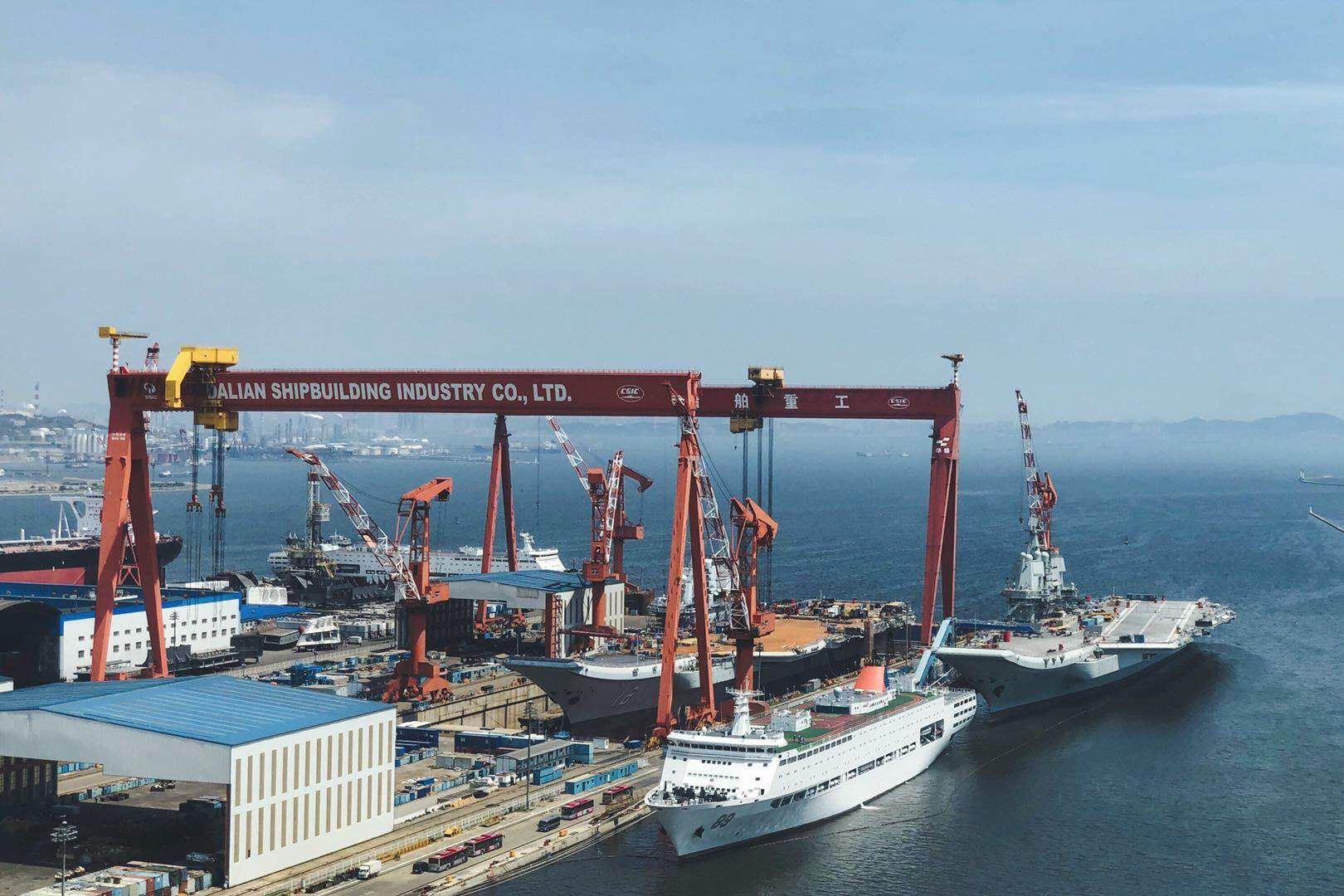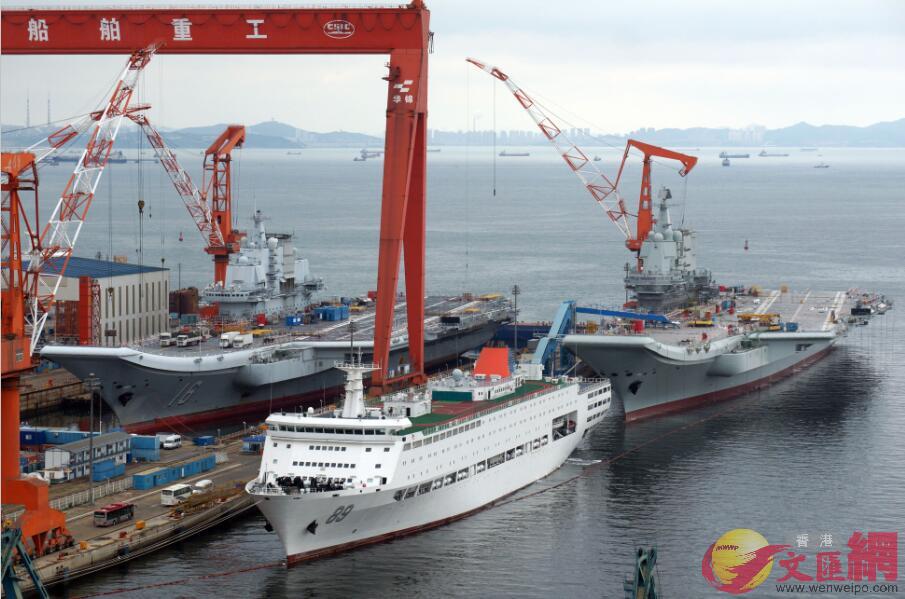It looks like you're using an Ad Blocker.
Please white-list or disable AboveTopSecret.com in your ad-blocking tool.
Thank you.
Some features of ATS will be disabled while you continue to use an ad-blocker.
share:
Its the ability to build them quickly after they are lost is the key..Japan learnt that the hard way.
a reply to: Zaphod58
was it the FOXBAT that defected to japan and when the americans opened it up they were shocked to find vacuum tubes and similar legacy hardwear?
there is something to be said about getting the job done well with what you have around you, and Russia is great at that.
was it the FOXBAT that defected to japan and when the americans opened it up they were shocked to find vacuum tubes and similar legacy hardwear?
there is something to be said about getting the job done well with what you have around you, and Russia is great at that.
a reply to: Zaphod58
Actually the use of vacuum tubes goes to the heart of low tech, but elegant.
The Wikipedia article about the Foxbat made a good point about the usefulness of vacuum tubes in that aircraft:
-dex
Actually the use of vacuum tubes goes to the heart of low tech, but elegant.
The Wikipedia article about the Foxbat made a good point about the usefulness of vacuum tubes in that aircraft:
The majority of the on-board avionics were based on vacuum-tube technology, not solid-state electronics. Although they represented aging technology, vacuum tubes were more tolerant of temperature extremes, thereby removing the need for environmental controls in the avionics bays. With the use of vacuum tubes, the MiG-25P's original Smerch-A (Tornado, NATO reporting name "Foxfire") radar had enormous power – about 600 kilowatts. As with most Soviet aircraft, the MiG-25 was designed to be as robust as possible. The use of vacuum tubes also made the aircraft's systems resistant to an electromagnetic pulse, for example after a nuclear blast.
- Tolerant of temperature extremes, thus no need for avionics cooling
- Extremely powerful radar
- Resistant to EMP
-dex
The photos might be a bit old, fair warning, but seeing the "Shandong" and Liaoning together is pretty impressive.


Seeing the semis on the deck is just...weird. We may do it too, but I've not seen it.


Seeing the semis on the deck is just...weird. We may do it too, but I've not seen it.
originally posted by: andy06shake
Whats the deal with the antiquated inclined ramp?
Different carrier philosophy. They are not antiquated. The Royal navy invented both the angled deck and the steam catapult on carriers, but don't use them today. The Royal navy also invented the ski-jump, which they continue to use and which is copied by the Russians and the Chinese etc...
a reply to: paraphi
Catapults have been historically maintenance and power intensive. That's because they used steam.
Not using them, means a lot of savings $ wise.
However, there are other costs like payload and range.
The Brits wanted to save dinero, so they ditched the cats. The Russians and Chinese hadn't experience in making reliable cats, so they went ski jump.
However, the Chinese have been working on steam cats and the new EMALS.
EMALS is probably going to be less maintenance intensive than the steam cats. It is certainly less mechanically complicated.
Supposedly, the next Chinese carrier will have EMALS cats like the Ford does. There was some claims the 'Shandong' would, but that turned out to not be the case.
Catapults have been historically maintenance and power intensive. That's because they used steam.
Not using them, means a lot of savings $ wise.
However, there are other costs like payload and range.
The Brits wanted to save dinero, so they ditched the cats. The Russians and Chinese hadn't experience in making reliable cats, so they went ski jump.
However, the Chinese have been working on steam cats and the new EMALS.
EMALS is probably going to be less maintenance intensive than the steam cats. It is certainly less mechanically complicated.
Supposedly, the next Chinese carrier will have EMALS cats like the Ford does. There was some claims the 'Shandong' would, but that turned out to not be the case.
a reply to: mightmight
They actually do it quite often. It saves the crew money by not having to pay to transport them, and time because their cars arrive when they do.
They actually do it quite often. It saves the crew money by not having to pay to transport them, and time because their cars arrive when they do.
I cannot imagine all those cars would survive a half decent storm. They would all be blown off the deck.
new topics
-
Are you ready for the return of Jesus Christ? Have you been cleansed by His blood?
Religion, Faith, And Theology: 9 minutes ago -
Chronological time line of open source information
History: 1 hours ago -
A man of the people
Diseases and Pandemics: 2 hours ago -
Ramblings on DNA, blood, and Spirit.
Philosophy and Metaphysics: 3 hours ago -
4 plans of US elites to defeat Russia
New World Order: 4 hours ago -
Thousands Of Young Ukrainian Men Trying To Flee The Country To Avoid Conscription And The War
Other Current Events: 8 hours ago -
12 jurors selected in Trump criminal trial
US Political Madness: 10 hours ago -
Iran launches Retalliation Strike 4.18.24
World War Three: 10 hours ago -
Israeli Missile Strikes in Iran, Explosions in Syria + Iraq
World War Three: 11 hours ago
top topics
-
George Knapp AMA on DI
Area 51 and other Facilities: 17 hours ago, 26 flags -
Israeli Missile Strikes in Iran, Explosions in Syria + Iraq
World War Three: 11 hours ago, 17 flags -
Thousands Of Young Ukrainian Men Trying To Flee The Country To Avoid Conscription And The War
Other Current Events: 8 hours ago, 6 flags -
Iran launches Retalliation Strike 4.18.24
World War Three: 10 hours ago, 6 flags -
Not Aliens but a Nazi Occult Inspired and then Science Rendered Design.
Aliens and UFOs: 17 hours ago, 5 flags -
12 jurors selected in Trump criminal trial
US Political Madness: 10 hours ago, 4 flags -
4 plans of US elites to defeat Russia
New World Order: 4 hours ago, 2 flags -
A man of the people
Diseases and Pandemics: 2 hours ago, 2 flags -
Chronological time line of open source information
History: 1 hours ago, 2 flags -
Ramblings on DNA, blood, and Spirit.
Philosophy and Metaphysics: 3 hours ago, 1 flags
active topics
-
The Tories may be wiped out after the Election - Serves them Right
Regional Politics • 24 • : crayzeed -
A man of the people
Diseases and Pandemics • 7 • : TheMichiganSwampBuck -
4 plans of US elites to defeat Russia
New World Order • 22 • : Greazel -
Israeli Missile Strikes in Iran, Explosions in Syria + Iraq
World War Three • 54 • : CarlLaFong -
Are you ready for the return of Jesus Christ? Have you been cleansed by His blood?
Religion, Faith, And Theology • 0 • : TheGoodNews -
12 jurors selected in Trump criminal trial
US Political Madness • 30 • : RazorV66 -
Thousands Of Young Ukrainian Men Trying To Flee The Country To Avoid Conscription And The War
Other Current Events • 5 • : JAY1980 -
Meet Catturd who has been swatted 3 times
General Conspiracies • 22 • : 7dayhome -
In the Beginning was the Word, and the Word was with God, and the Word was God
Religion, Faith, And Theology • 28 • : TheGoodNews -
Biden--My Uncle Was Eaten By Cannibals
US Political Madness • 48 • : CarlLaFong

